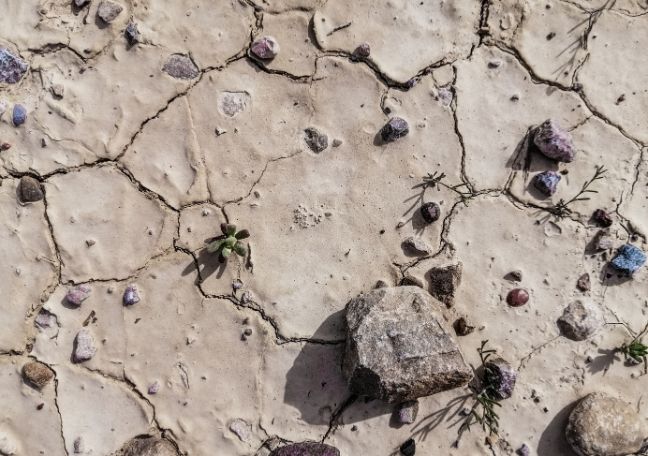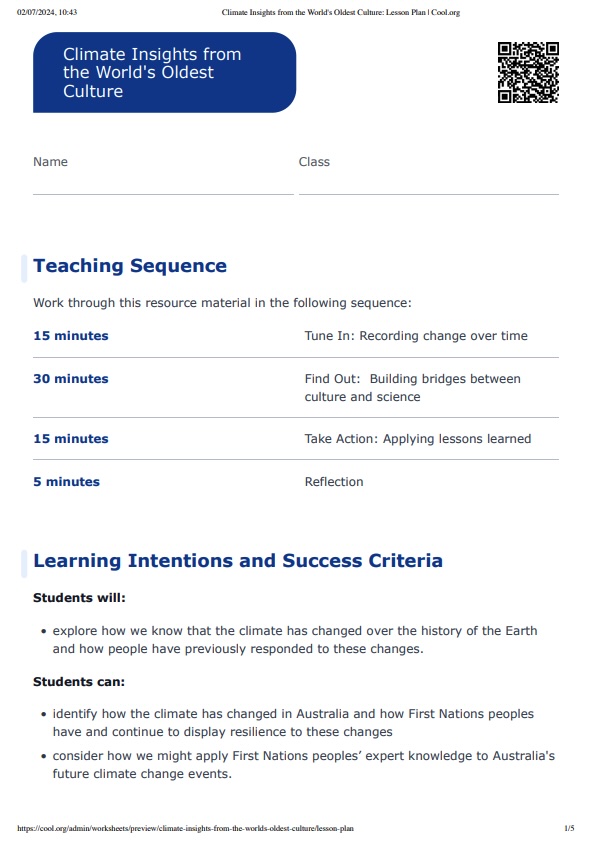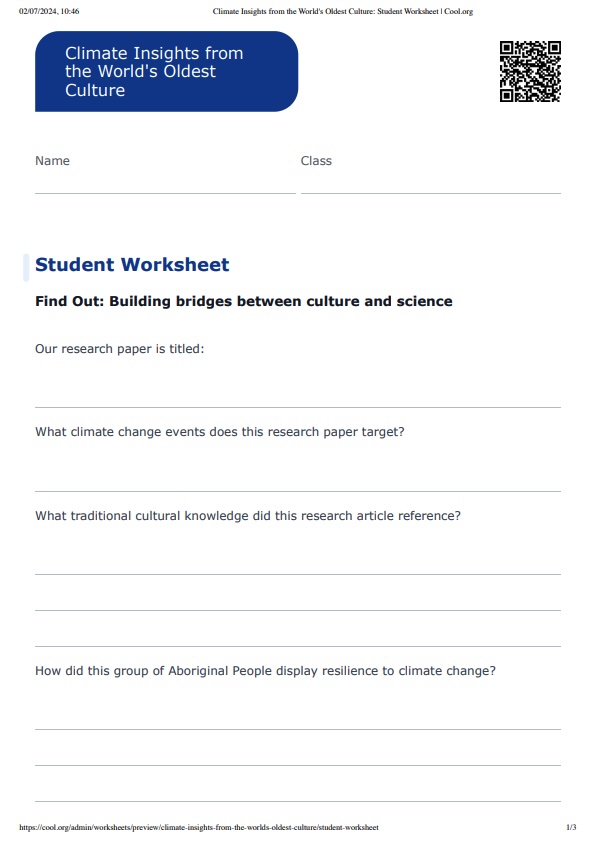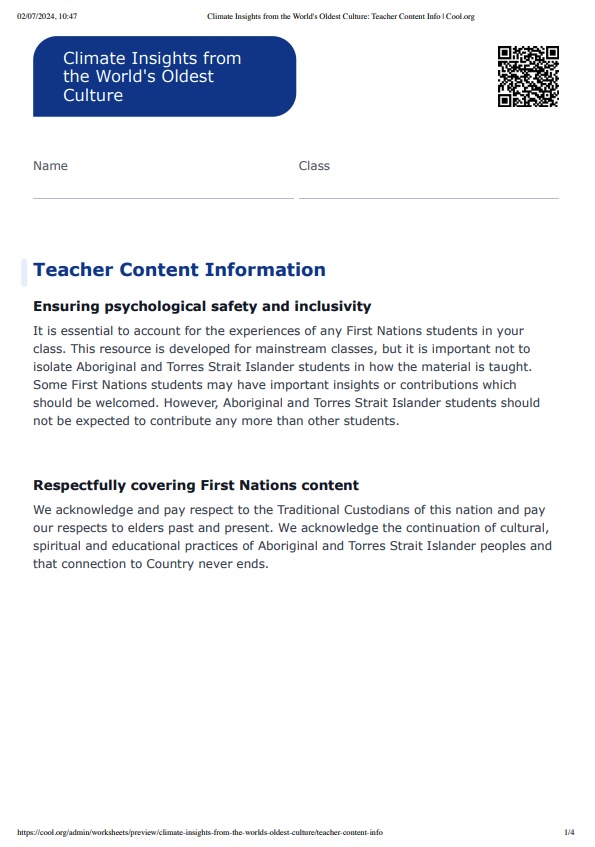Lesson summary
As the world experiences a changing climate, what can a country like Australia learn from Aboriginal and Torres Strait Islander peoples' experiences over millennia? What First Nations knowledges and expertise can help inform Australia's understanding of climate and preparation for disaster resilience? Through a series of case studies, students will explore different climate change events and how people adapted to them.
Learning intentions:
Students will...
- explore how we know that the climate has changed over the history of the Earth and how people have previously responded to these changes.
Success criteria:
Students can...
- identify how the climate has changed in Australia and how First Nations peoples have and continue to display resilience to these changes
- consider how we might apply First Nations peoples’ expert knowledge to Australia's future climate change events.
Lesson guides and printables
Curriculum links
Select your curriculum from the options below.
Lesson details
Skills
This lesson is designed to build students’ competencies in the following skills:
- critical thinking
- collaboration
- communication
- cultural understanding
- curiosity
- ethical understanding
- intercultural understanding
Curriculum Mapping
Australian Curriculum (v9.0) content description:
- Use models of energy flow between the geosphere, biosphere, hydrosphere and atmosphere to explain patterns of global climate change. (AC9S10U04)
Relevant parts of Year 10 achievement standards: By the end of Year 10, students describe trends in patterns of global climate change and identify causal factors.
NSW Syllabus outcomes:
- SC5-ENV-01: Analyses the impact of human activity on the natural world.
General capabilities: Critical and Creative Thinking, Intercultural Understanding
Cross-curriculum priority: Aboriginal and Torres Strait Islander Histories and Cultures, Sustainability
Level of teacher scaffolding: Medium - Guide students with reading, reflecting and analysing articles from different sources.
UN Sustainable Development Goals
UN SDG 13 Take urgent action to combat climate change and its impacts
- Target 13.3: Improve education, awareness-raising and human and institutional capacity on climate change mitigation, adaptation, impact reduction and early warning.
Resources Required
- Case Studies (one per group, digital or printed)
- Climate Change Indicators Presentation
- Device to share presentation with students
- Student Worksheet
Additional Info
We would like to acknowledge and express our gratitude for the expertise and advice provided in the creation process of these resources from the following parties:
- The Australian Institute for Disaster Resilience (AIDR)
- Bhiamie Williamson (Monash University)
Related Professional Learning
How to Teach a Unit on Fire and Flood Resilience
Quick summary: This course will provide a roadmap for how to approach teaching a unit on fire and flood resilience. While primarily focused on fire and flood resilience, it will reference the importance of an all-hazards approach to disaster resilience education.





Welcome back!
Don't have an account yet?
Log in with:
Create your free Cool.org account.
Many of our resources are free, with an option to upgrade to Cool+ for premium content.
Already have an account?
Sign up with:
By signing up you accept Cool.org's Terms and Conditions(Opens in new tab) and Privacy Policy(Opens in new tab).